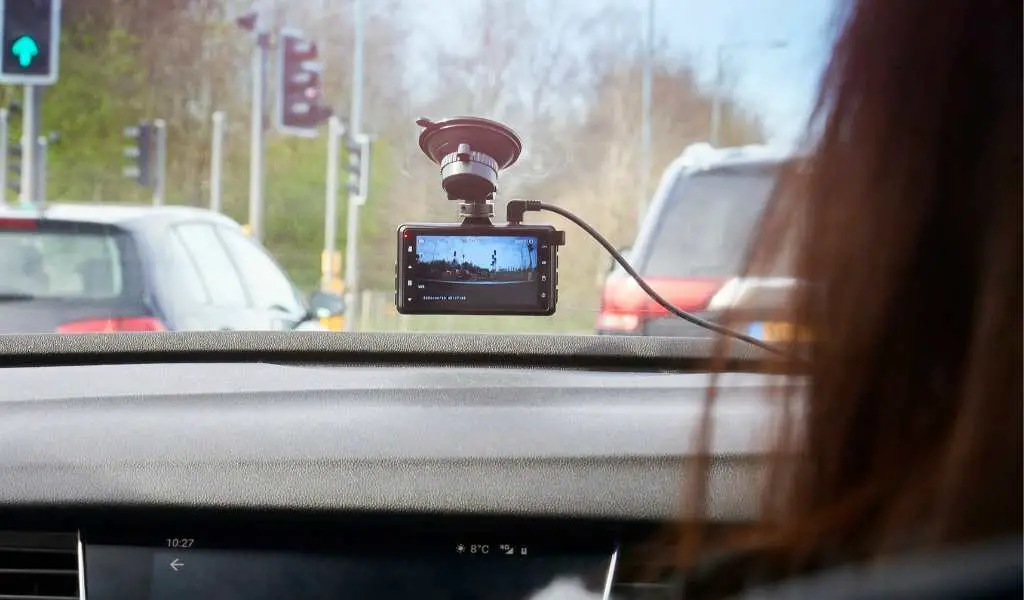Disclosure: As an affiliate I may earn a commission on any qualifying purchases, including those from Amazon, at no extra cost to you -read more
You only realise the value of a dashcam after an incident has occurred and you’re able to go back and review the footage.
But you’re probably wondering how it manages to save all of the footage without the memory card getting full. Do dashcams record all the time?
Yes, dashcams do record all the time using continuous loop recording. However, once the memory card is full, the old footage is overwritten unless it has been saved by the user or via the automatic saving mechanisms such as when a crash is detected via the G-sensor.
In the rest of this guide, I’ll share some further information on how continuous recording works when the car is on and whilst it’s parked.
How Does Continuous Loop Recording Work on Dashcams?
Dashcams record in a continuous loop, this means that old footage is overwritten when the memory card is full so that the device can continue to function.
Most dashcams save footage in 1-minute or 3-minute segments, the oldest segments of footage will be overwritten first, providing they haven’t been saved to permeant storage.
If footage has been saved, it will be put in a permanent storage file which means it won’t be overwritten by the loop recording.
Footage can usually be saved in one of these ways:
- Manually via a save button on the device
- Using your voice if the device supports this
- When the G-sensor thinks a collision has occurred
- When the parking sensors thinks there has been activity around your vehicle
Any footage that hasn’t been saved will be overwritten when the memory is full.
Your dashcam will probably save many recordings which are not needed, once you have reviewed these you can delete them manually and the memory space will become available again for loop recording.
Do Dashcams Record When the Engine is Switched Off?
When you think of dashcams, you might imagine they are only useful when driving.
However, they can also be useful for those times when you’re not behind the wheel such as when the car is parked.
Many dashcams are able to record when the car is turned off, this is known as parking mode and helps protect against damage or theft when you are not around. To use this, you will need to hardwire the dashcam to your vehicle or use an external dashcam battery.
When the engine is off, dashcams will still use the same continuous loop recording, automatically storing any footage when it detects movement or activity.
Whilst most dashcams have parking mode, the reliability of it will vary between different dashcams and the hardware inside.
Better cameras will improve the dashcams ability to detect movement. Some high-end devices also have radar that are better at detecting activity around your vehicle.
Where is Dashcam Footage Saved?
Most dashcams will have an SD or micro-SD card slot which is used for saving footage.
The downside of this is that a thief could steal the dashcam and take with them the footage of them breaking into the car.
Some of the very high end dashcams have cloud storage which will upload saved videos to remote servers. This ensures you can access the footage should the dashcam be stolen.
This is currently limited to a handful of devices such as Blackvue 4K and Thinkware U1000.
Does a Dashcam Drain Your Battery?
Dashcams only have a limited internal battery, so they are usually powered in one of these ways:
- Using a charger in your 12v cigarette lighter socket
- Hard wired into the vehicle
- External dashcam battery pack
Whilst the cigarette lighter is the quickest and simplest way to power your dashcam, it is usually a switched circuit which means it work when the car is turned off.
If you wish to use parking mode, it will need to be hardwired to a live circuit or have an external battery pack.
Don’t worry, as long as you use a good hardwire kit, a dashcam won’t drain your battery as it will cut out once the battery has depleted past a certain level.
The hardwire kit will do this via a built-in voltage meter which will monitor the voltage of the battery and detect when it is too low.
An alternative to hardwiring your dashcam is using an external battery pack to power your dashcam at night.
What’s the Best Dashcam Hardwire Kit?
When buying a dashcam hardwire kit, I recommend sticking with the official manufacturer kit to ensure it doesn’t drain your battery.
Here are the hardwire kits for the most popular brands:
- Blackvue Power Magic Pro
- Nextbase Series 2 Hard Wire Kit
- Vantrue Official Hardwire Kit
- Halfords HDC Dash Cam Hardwire Kit
What’s the Best Dashcam External Battery Pack?
If you opt for the route of an external battery pack for your dashcam, then you’ll probably need to fork out a lot more for the set up.
The Celllink NEO 6 is the best-in-class battery pack for dashcams and can provide enough power for up to 45 hours of recording.
It comes with adaptors for all the major dashcams and recharges itself via the cigarette lighter socket when the car is on.


Kieren is the founder and editor-in-chief of Auto Adviser. Kieren created the site to share his passion of cars that began long before he passed his driving test and is now a recognised contributor in the industry. Outside of cars, Kieren loves drinking coffee and travelling to far-off lands.

